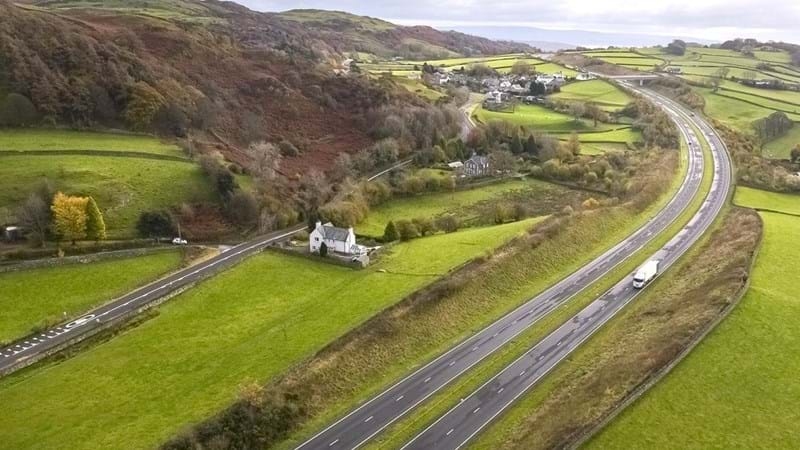
The Department for Transport (DfT) and National Highways face “difficult decisions” in prioritising road enhancement projects amid rising costs, the National Audit Office (NAO) has warned.
The NAO said that delays to road projects and inflationary pressures meant that by March 2025, National Highways will have undertaken less work on road enhancement and at a higher cost than originally planned.
The second Road Investment Strategy, which covers the five years between April 2020 and March 2025, initially set out government spending of £27.4bn on the network. This included £14.1bn earmarked for 69 road enhancement projects (almost double the £7.7bn budget for the previous five years). Within these projects, nine were classified as ‘tier 1’ – typically costing more than £500m or that are novel, contentious, involve complex engineering work or detailed consultation with stakeholders.
Inflationary pressures
But the NAO warned that inflationary pressures, delays, and changes in government priorities had “created risks to the deliverability, affordability, and value for money of National Highways’ enhancement portfolio”.
It said that some of these issues could carry forward into the third road investment period (2025-2030).
In 2021, DfT reduced the total number of projects (down from 69 to 58) and reduced National Highways’ budget for road enhancements by £3.4bn (27%). But the costs of the remaining projects have continued to rise. As of September 2022, they have increased across the portfolio of projects by approximately £3.3bn.
Contingency fund won’t cover increases
National Highways created a £1.16bn contingency budget to address emerging risks, but the NAO said these funds will not be able to cover the increased costs. More than half of the contingency funds were allocated between the setting of the draft budget in 2018 and the publishing of the delivery plan in 2020. By July 2022, National Highways had allocated £1.19bn of contingency funds, more than the original budget.
In March 2022, National Highways reported that that a third of projects in the revised plan were at risk of delay, mainly because of difficulty in securing development consent.
The NAO said that both National Highways and DfT “could have done more” to plan for and manage the potential risks to their portfolio of enhancement works.
In the second Road Investment Strategy, National Highways had planned to obtain consent for 33 infrastructure projects, but by May 2022 it had experienced delays in receiving or applying for development consent on 12 of the projects. National Highways had to undertake extra work in most cases to show how road projects complied with evolving government policy relating to environmental standards, with some projects being legally challenged by stakeholders in relation to their cumulative carbon impact.
NAO recommendations
In the short-term, NAO has recommended that DfT and National Highways should, working alongside HM Treasury, develop a response to the current inflationary pressures, addressing the implications this will have for the cost of planned projects. And it called on DfT and National Highways to work with other government departments to ensure that they are taking account of wider government policies.
In the longer-term, NAO recommended that National Highways make further improvements to its management of risks that could have an impact upon the delivery of the third Road Investment Strategy.
Gareth Davies, head of the NAO, said: “The Department for Transport and National Highways put together an extensive road investment plan that has been unfortunate to coincide with the covid-19 pandemic and rising inflation.
“Nevertheless, more could have been done to manage risks. Delays to projects have meant that less work has been delivered than planned and at a higher cost.
“DfT and National Highways must now fully address the rising cost of its revised portfolio of projects, undertaking a review of all road plans that it plans to move into the period of its third road strategy (2025-2030). This review must consider if these projects remain feasible and provide optimal value for money.”










